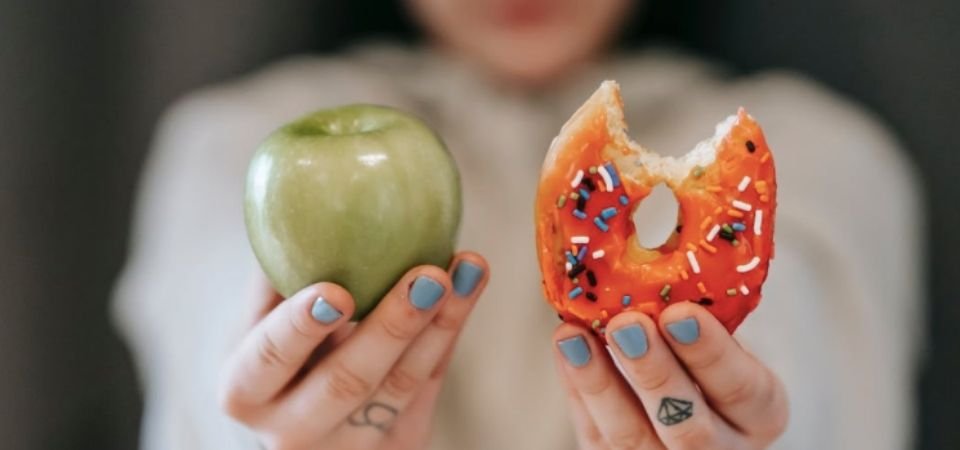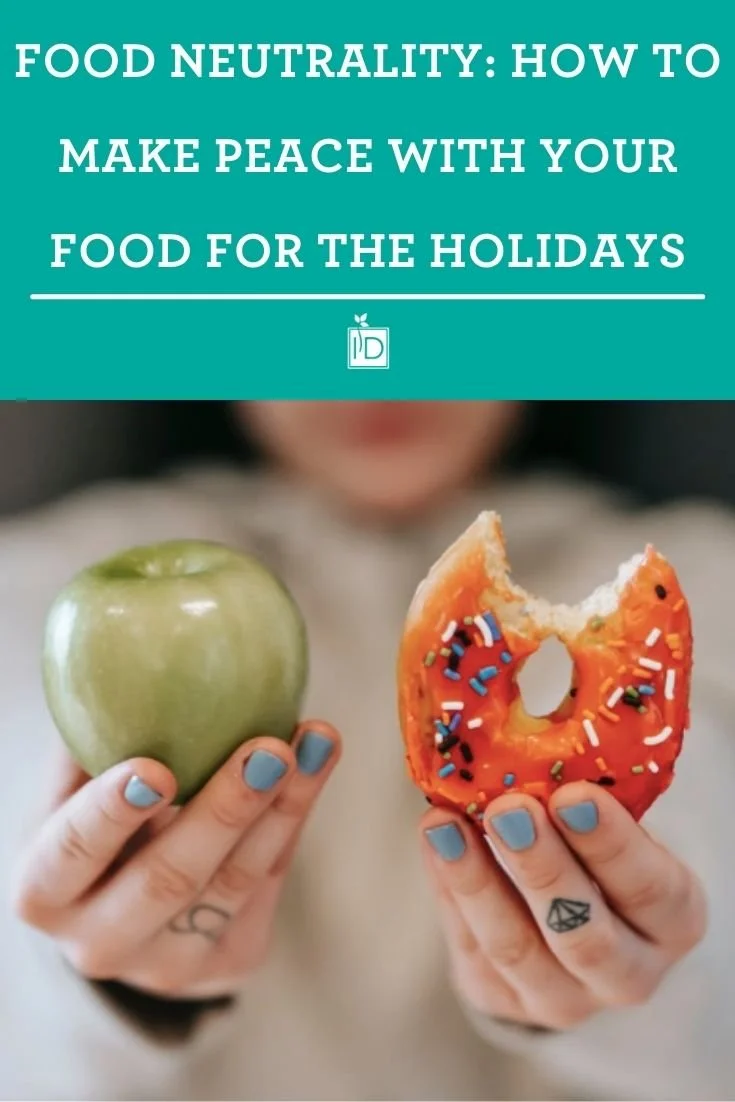Food Neutrality: How to Make Peace with Your Food for the Holidays
Now is the time of year when headlines will tell you all the tips and tricks for making Thanksgiving recipes healthier and how to stay fit for the holidays. As a Registered Dietitian I know this well because I’ve made a career of writing these articles. I can tell you just about every healthy recipe substitution and how many miles you need to walk to burn that turkey dinner.
What if this year you tried something fresh and unique? You see, as a military spouse you can appreciate what it is like to have so many major life influencers outside of your control. You don’t get to choose where you live or even whether or not your loved one will be home for the holidays. You do get to control your mindset however, particularly your mindset about food.
“[W]hat if you believed that food is neutral.”
I’m going to ask you to open your mind to a new approach to food. Instead of partitioning foods into “good” and “bad” camps, what if you believed that food is neutral. Food doesn’t just “help” or “hurt” your health. If you decide that food is neutral, then you have the power over your perception of food.
If you can open your mind and heart to the idea that food is neutral, you can enjoy the holidays in a whole new way.
WHAT IS FOOD NEUTRALITY?
Food neutrality is a concept that suggests that foods are not dichotomous. In this sense, foods aren’t just “good vs. bad” or “healthy vs. unhealthy.” You might say to yourself that a brownie is “bad,” and a salad is “good.” Food neutrality however, encourages you to perceive food as neutral.
Ask yourself, why do you eat? I’m willing to bet anything your first response wasn’t hunger. Most people will respond with boredom, habit, celebration, stress, depression or love. Try to imagine a celebration or social gathering that didn’t involve some kind of food or drink. People are social creatures and food is strongly tied to customs, religious beliefs, and social norms.
I challenge you today to get curious about when and what you eat. Ask yourself, why am I eating now? Am I hungry? Am I bored? Have I created a habit where I always eat around this time of day? Additionally, why am I choosing this food? Once you start to examine why you are eating, then you can consider the types of food you are having.
Old thought pattern: I am so guilty that I ate a slice of pie after a large Thanksgiving meal; pie is so bad for you.
New thought pattern: I look forward to pumpkin pie each year and I’m so glad I could enjoy it today. One dessert will not change the course of my health.
APPLYING FOOD NEUTRALITY AND THE FOOD SPECTRUM
I am not making the argument that pumpkin pie is a nutritious choice. You can safely concede that nutritionally speaking, there are foods that nourish and foods that don’t. What I am saying is that you can learn to disconnect emotion from food.
Imagine a spectrum of all the foods you’d find in the grocery store. On one end, you’d find nutrient-dense foods such as fruits, vegetables, beans, lean meats, etc. On the other end, you’d find “comfort foods” such as fried foods, ice cream, candy, etc.
Looking strictly through a nutrition lens, if you are choosing foods that are nourishing a majority of the time, you will reap greater health benefits. The same principle applies to choosing more non-nourishing foods. This is factual. This is not a discussion on the nutritional profile of foods. Instead the focus here is on how you feel when you eat particular foods. This is where food neutrality comes into play.
What you want to break away from is assigning “good” to the nourishing foods and “bad” to the non-nourishing foods. Let’s use a family recipe for pumpkin pie as an example. Pumpkin pie doesn’t offer much nutritionally. Yet, enjoying a piece of that pie each year feeds you emotionally. Taking the food neutrality concept a step further, you want to release the thought that eating nourishing foods makes us “good” and conversely, eating non-nourishing foods makes us “bad.”
You are more than your food choices.
AN EXERCISE IN FOOD NEUTRALITY
Let’s walk through how you can apply the concept of food neutrality to your lived experience. Fill in the blank below:
At the holidays, I enjoy eating _____________________________________.
I believe that I can enjoy __________ at the holidays because I am not my food choices.
If I want to enjoy a food that is not nourishing, I did not do something bad. I am not bad.
I know that I can still eat foods that I enjoy but may not nourish my body.
When you start believing in this concept, you can experience a food freedom that is life-changing.
ABOUT SHANNAN
Shannan Bergtholdt, MS Ed, RD is a Registered Dietitian with a master’s degree in Exercise Science. More notably, Shannan is an Air Force Spouse and Army veteran. She has been enabling people to take charge of their health for over 17 years. You can find more articles and information from Shannan on her website, www.revolutionrd.com or on Instagram revolution.dietitian.




